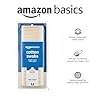When a medication is prescribed, reasonable questions arise like, How useful is this medicine? How does my doctor know that this drug really works? Is it worth the cost? Will it work on me? What are the side effects?
Enter Numbers Needed to Treat
Number Needed to Treat (NNT) is a statistical concept to represent the effectivity of a drug or medical procedure for treatment. NNT refers to the number of people taking the same medicine that will need to take that medicine for 1 person to benefit. The nearer the NNT to the number one, the more effective the drug. If the NNT is 1, then everybody that takes that medicine will benefit. If the NNT is 1,000, then only 1 person will get treated, the rest wasted their money and maybe exposed themselves to harm.
Number Needed to Harm
As in everything else, there is the opposite of NNT. And that is NNH. Numbers Needed to Harm. NNH represents the number of people needed to take that drug or undergo a procedure to have an adverse side effect or complication. The smaller the NNH, the more dangerous is the drug. If NNH is one, then all patients who take that drug gets an adverse reaction. If the NNH is 1,000, then out of 1,000, who take medicine or undergo the procedure, one will have an adverse outcome.
TheNNT.com
TheNNT.com is a website that lists the NNTs and NNHs of different medicines. It also shows the source of their data and a discussion of what the NNT for that drug means.
Let us check on a drug that a lot of people may be taking to prevent a heart attack. Statins.
For statins in persons at low risk of cardiovascular disease, the NNT is
- No statistically significant mortality benefit
- 1 in 217 avoided a nonfatal heart attack (myocardial infarction)
- 1 in 313 avoided a nonfatal stroke
The NNH for statins in persons at low risk of cardiovascular disease
- 1 in 21 experienced pain from muscle damage
- 1 in 204 developed diabetes mellitus
Therefore for people who have a low risk of cardiovascular disease who take statins, they are more likely to get the harmful effects (diabetes mellitus and muscle damage) than to get the right impact (avoiding a non-fatal heart attack and a non-fatal stroke) and it will not prevent them from dying secondary to a cardiovascular disease.
You Can Also see the Results as Percentages
On the same page of NNT.com on the right-hand side. There is a “View as percent” (You have to look for the percent symbol because WordPress will not save my article if it detects the percent symbol),” and you can click on percent to see the data expressed in percentages.
NNTs for drugs are specific for that particular group of patients. Notice the qualifier “in persons at low risk of cardiovascular disease.” That qualifier should be included because of the NNT and NNH data for “Statins for Heart Disease Prevention (With Known Heart Disease) is different. Thus, not all NNTs for statins apply to everybody.

Precaution
It is important to reiterate that NNT and NNH are specific, and medical treatment is not constantly straightforward. It is not always “Take drug A for disease condition AA,” because usually there are other disease conditions present and other medications being taken that can interact with other medicines. The situation when that drug was evaluated may not exactly be the same for everybody.
How to Use the NNT and NNH
Use the NNT and NNH as one tool together with other devices in making a decision for treatment in conjunction with your physician.
Therefore, if you see a high NNT number for a medication that you may be taking, don’t just stop it. Talk to your doctor about it. Your physician may have made other considerations into account, like previous experience with the same situations as yours.
Consider the cost of the drug, the severity of the outcome if it not prevented, side effect profiles, and personal values to arrive at a well informed medical decision.
Feel free to comment, like on FaceBook and share.
Thanks for reading.
Photo Credit:
Photo by Goh Rhy Yan on Unsplash
© 2019 DrJesseSantiano.com All Rights Reserved





























